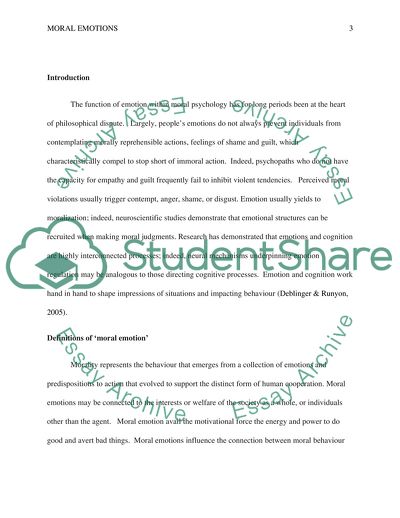Cite this document
(Moral Emotions Essay Example | Topics and Well Written Essays - 2250 words, n.d.)
Moral Emotions Essay Example | Topics and Well Written Essays - 2250 words. https://studentshare.org/psychology/1805775-discuss-what-is-meant-by-a-moral-emotion-and-critically-evaluate-claims-that-moral-emotions-drive-and-regulate-human-social-behaviour-with-reference-to-research-evidence
Moral Emotions Essay Example | Topics and Well Written Essays - 2250 words. https://studentshare.org/psychology/1805775-discuss-what-is-meant-by-a-moral-emotion-and-critically-evaluate-claims-that-moral-emotions-drive-and-regulate-human-social-behaviour-with-reference-to-research-evidence
(Moral Emotions Essay Example | Topics and Well Written Essays - 2250 Words)
Moral Emotions Essay Example | Topics and Well Written Essays - 2250 Words. https://studentshare.org/psychology/1805775-discuss-what-is-meant-by-a-moral-emotion-and-critically-evaluate-claims-that-moral-emotions-drive-and-regulate-human-social-behaviour-with-reference-to-research-evidence.
Moral Emotions Essay Example | Topics and Well Written Essays - 2250 Words. https://studentshare.org/psychology/1805775-discuss-what-is-meant-by-a-moral-emotion-and-critically-evaluate-claims-that-moral-emotions-drive-and-regulate-human-social-behaviour-with-reference-to-research-evidence.
“Moral Emotions Essay Example | Topics and Well Written Essays - 2250 Words”. https://studentshare.org/psychology/1805775-discuss-what-is-meant-by-a-moral-emotion-and-critically-evaluate-claims-that-moral-emotions-drive-and-regulate-human-social-behaviour-with-reference-to-research-evidence.


